-
Featured Items
-
Featured Resources
 Funding & Grants
Don't miss out on funding opportunities. Stay informed with our up to date online listings and email notifications.
Read More
Funding & Grants
Don't miss out on funding opportunities. Stay informed with our up to date online listings and email notifications.
Read More
 Skilled Migration
Our services help both applicants and employers, to learn more, develop plans, submit applications, and settle in.
Read More
Skilled Migration
Our services help both applicants and employers, to learn more, develop plans, submit applications, and settle in.
Read More
 Research and Analysis
Good research and analysis makes the case. How can our resources and services help your project or application?
Read More
Research and Analysis
Good research and analysis makes the case. How can our resources and services help your project or application?
Read More
 Information & Data Resources
With resources like REMPLAN, Regional Knowledge Base, and decades of data, discover how we can help your project.
Read More
Information & Data Resources
With resources like REMPLAN, Regional Knowledge Base, and decades of data, discover how we can help your project.
Read More
-
Stay InformedSubscribe to one or more of our regular email subscriptions, to be kept up to date on news and funding opportunities for the region
-
-
Our Region
- Our Region
- Regional Plan
- Regional Data
- Current Regional Issues
- Population Migration Analysis for 2016-21
- Job Vacancies Continue at All-Time High
- National Debt - What it Means for Our Economy?
- The True Value of Home Solar
- The Economic Impacts of Local Government Amalgamations
- State of the Regions Report 2014-15
- Antifragility - A different take on regional economic development
- Biohubs - Collaborative Waste Management
- Attracting New Residents
- Socio-Economic Impacts of the Murray Darling Basin Plan
- Murray Darling Basin Water Recovery
- Growing Businesses
- The Northern Inland Economy
- Geographical Overview
- Major Industry Sections
- Our Services
- Grants and Funding
-
Skilled Migration
- Skilled Migration
- Skilled Employer Sponsored Regional Visa
- Skilled Work Regional Visa (subclass 491)
- Temporary Seasonal Workers
- Designated Area Migration Agreement (DAMA)
- Helpful Information for Visa Holders
- Information for Employers
- Case Studies
- Payment Details
- Advice & Further Information
- Contact Details
- News & Events
-
Our Projects
- Our Projects
- Current Projects
- The Welcome Experience
- Come On Inland
- Wool Works - Wool Training Schools
- Skilled Migration
- Metal Works - Welding and Fabrication Schools
- Stories of Resilience
- Alt Brothers Beekeeping - Glen Innes
- Carelle's Toy Store - Glen Innes
- Greenhill Orchards - Arding
- Gwydir Meats - Warialda
- Kaputar Motors - Narrabri
- Moonbi General Store - Moonbi
- Sandstock - Tingha
- Sherelle Fashions - Tenterfield
- Sleepy Merino - Inverell
- Tenterfield Chamber of Toursim, Industry and Business - Tenterfeild
- The Welders Dog - Armidale
- Walcha Veterinary Supplies - Walcha
- AGCAP - Agribusiness Careers & Professions
- Northern Inland Regional Investment Profile
- Past Projects
- Digital Economy Strategy
- Business Growth Project
- Go Digital
- How to Start an Online Business
- Create Your Website Using Squarespace
- How to Edit Your Squarespace Site - Part 1
- How to Edit Your Squarespace Site Part 2
- Add a Shop to Your Squarespace Site
- Start a Blog and Find out What Customers are Searching
- 14 Tips For a Better Blog Post
- Which Social Media Platforms are Best for Your Business
- How to Use Facebook Effectively For Your Business – Part 1
- How to Use Facebook Effectively For Your Business – Part 2
- Instagram Tips for Business
- Catching Up, More Instagram & Dealing with Haters
- Getting Started with Twitter for Business
- Social Media Scheduling Tools
- How to Start an Etsy Shop – Part 1 – Research
- How to Start an Etsy Shop – Part 2 – Signup
- Online Security for Your Business
- Product Photography and Website Images: Your Guide
- 5 Tips to Improve your Productivity in your Business
- Best Online Business Resources
- How to Improve Your Communication Skills and Win More Clients
- NBN Coordinator
- Putting Power Back in the Regions
- Road Freight Study
- Town Audit Benchmarks
- Food and Wine
- Youth Survey
- Digital TV Switchover Assistance
- Northern Inland Transport Guide
- Live.Train.Work
- Northern Inland Innovation Awards
- Northern Inland Innovation Awards - 2017
- Northern Inland Innovation Awards - 2016
- Northern Inland Innovation Awards - 2015
- Northern Inland Innovation Awards - 2014
- Northern Inland Innovation Awards - 2013
- Northern Inland Innovation Awards - 2012
- Norther Inland Innovation Awards - 2011
- Prime Super Northern Inland Innovation Awards - 2010
- Prime Super Northern Inland Innovation Awards - 2009
- Northern Inland Innovation Awards - 2007
- Northern Lights Project
- NBN Smart Home
- Murray Darling Basin
- Moree Plains Business Workshops
- Namoi Investment Prospectus
- Industrial Land
- Bioenergy and Local Electricity Retailing
- Northern Inland Business Energy Assessment
- Skills for the Future
- Impacts of COVID-19 on Businesses
- Past Projects of NIRDB
- Aboriginal Employment and Enterprise in the Gunnedah Region
- Art as an Industry
- Aviation Survey
- Farm Forestry - Northern Inland Forestry Investment Group
- New England North West Film Strategy
- Northern Inland Excellence in Business Awards
- Food and Wine 2003 - 2008
- Prime Super Northern Inland Innovation Awards 2009
- Regional Business Networking Program
- Regional Leadership Course 2008
- Viticulture Strategy 2002-2003
- About Us
- Contact Us
- Other Resources
- Privacy and Legal
- Search
- Our RegionOur Region
- Current Regional IssuesCurrent Regional Issues
- Population Migration Analysis for 2016-21Population Migration…
Northern Inland Population Migration for 2016-2021
Introduction
Population growth is a major objective of all twelve Local Government areas (LGAs) in the Northern Inland region of NSW as evidenced by the objectives in their Community Strategic Local Plans.
For our communities and economies to grow and prosper and to attract the level of services communities expect, population and labour force supply are critical.
Net migration (in-migration minus out-migration) is a key contributor to both the population level and the supply of labour which has been negatively impacted recently by the Covid-19 pandemic.
This paper summarises the migration situation for the 12 Local Government areas in the Northern Inland region between 2016 and 2021.
Migration Patterns by LGA
The most recent ABS Census data for 2016 and 2021 provides data on place of residence between these two Census periods and hence the numbers of people who moved into and out of the region from various locations.
It is important to recognise that this data will not pick up people who moved from the region to an overseas destination, as those people will not complete the Census survey. However, it will pick up people who have moved from overseas into the region during that five year period (i.e. in-migration from overseas). In recent years, in-migration from overseas has been an important contributor to retaining a skilled workforce and RDANI administers two skilled-migrant visas for this purpose.
The following sections summarise the migration situation by each LGA in our region.
Armidale Regional LGA
Armidale is characterised by a net loss of people in terms of domestic migration with most people moving to Qld, the North Coast of NSW and the Newcastle/Hunter region. However it had the highest level of in-migration from overseas (1,787 people) during the 2016-21 period, largely due to the presence of the University of New England and the Costas’ Tomato Farm at Guyra which employs large numbers of staff from South Pacific nations. As out-migration overseas cannot be tracked, net overseas migration can’t be calculated. However net domestic migration shows a loss of population in the order of 1,459 people.
The only locations providing a net inflow of people to the Armidale LGA are Sydney and other LGAs in the Northern Inland region.
However, between 2016 and 2021 Armidale had a net increase in estimated resident population of 22 people, indicating that the net outflow of population to other areas and deaths was more than compensated for by the domestic and overseas inflow and births.
Glen Innes Severn LGA
Glen Innes had a net loss of population from domestic migration in the order of 28 people. Most moved to Qld and other Northern Inland LGAs. However, there was a significant inflow of people from the rest of NSW, Sydney and the North Coast of NSW.
98 people moved to Glen Innes from overseas. The estimated resident population decreased by 12 between 2016 and 2021 indicating that the net outflow of population to other areas and deaths exceeded the domestic and overseas inflows and births.
Gunnedah Shire LGA
Gunnedah has a net loss of population from domestic migration in the order of 54 people with most moving to Qld and the Newcastle/Hunter regions. However, there was a significant inflow of people from the rest of NSW, other Northern Inland regions and Sydney. The larger outflow to the Hunter/Newcastle is probably a reflection of workers moving from the mining industry around Gunnedah to the mining industry in the Hunter.
165 people moved to Gunnedah from overseas. The estimated resident population increased by 594 people between 2016 and 2021 indicating that any net outflow of population to other areas and deaths was more than compensated for by the domestic and overseas inflow and births.
Gwydir Shire LGA
Gwydir had a net loss of 190 people in terms of domestic migration with most people moving to Qld, the other Northern Inland areas and the North Coast of NSW. Net inflows of people to the Gwydir LGA came mostly from Sydney, the rest of NSW and the Newcastle/Hunter region. There was a small number of people (15) moving into the region from overseas.
Between 2016 and 2021, Gwydir had a net decrease in estimated resident population of 415 people (a 7.8% decrease – the largest in the region), indicating that the net of population to other areas and deaths exceeded domestic and overseas inflows and births.
Inverell Shire LGA
Inverell is characterised by a net loss of 476 people in terms of domestic migration mostly to Qld, the North Coast of NSW and the Newcastle/Hunter region. Net inflows of people to Inverell came largely from other Northern Inland LGAs and the rest of NSW. 365 people moved to the region from overseas which is quite significant. Foreign workers coming to Bindaree Beef may account for this situation.
The estimated resident population increased by 104 people (0.6%) between 2016 and 2021 indicating that the net outflow of population to other areas and deaths was more than compensated for by the domestic and overseas inflow and births.
Liverpool Plains Shire LGA
The Liverpool Plains is characterised by a net loss of 242 people in terms of domestic migration mostly to other Northern Inland areas and also North Coast of NSW, Qld and the Newcastle/Hunter area. Net inflows of people to the area came largely from Sydney and the rest of NSW. 57 people moved to the region from overseas.
The estimated resident population decreased by 239 people (a 3.0% decline) between 2016 and 2021 indicating that the net outflow of population to other areas and deaths exceeded domestic and overseas inflow and births.
Moree Plains Shire LGA
The Moree Plains saw a substantial net loss of 1,154 people in terms of domestic migration mostly to Qld, North Coast of NSW, other Northern Inland LGAs and the Newcastle/Hunter region. Only Sydney produced a net inflow of people to the LGA. 157 people moved to the region from overseas.
The estimated resident population decreased by 666 people (a 4.9% decline) between 2016 and 2021 indicating that the net outflow of population to other areas and deaths exceeded the domestic and overseas inflow and births.
Narrabri Shire LGA
Narrabri Shire had a net loss of 690 people in terms of domestic migration mostly to Qld, other Northern Inland LGAs, the North Coast of NSW and the Newcastle/Hunter region. Sydney and the rest of NSW produced net inflows of people to the LGA. 141 people moved to the region from overseas.
The estimated resident population decreased by 558 people (a 4.2% decline) between 2016 and 2021 indicating that the net outflow of population to other areas and deaths exceeded domestic and overseas inflow and births.
Tamworth Regional LGA
The Tamworth Regional LGA experienced a relatively small net loss of 170 people in terms of domestic migration mostly to Qld, the North Coast of NSW and the Newcastle/Hunter region. Sydney and the rest of NSW produced net inflows of people to the LGA. 1,622 people moved to the region from overseas which is a significant number though slightly less than for Armidale. The presence of several major meat processing plants in Tamworth which utilize overseas workers is the main reason for this large influx of residents from overseas.
The estimated resident population grew by 2,662 people (a 4.4% increase) between 2016 and 2021, indicating that the net outflow of population to other areas and deaths was more than compensated for by the domestic and overseas migration inflows and births.
Tenterfield Shire LGA
The Tenterfield Shire LGA experienced a net loss of 84 people in terms of domestic migration mostly to Qld. The North Coast of NSW and Sydney produced the largest net inflows of people to the LGA. 68 people moved to the region from overseas.
The estimated resident population grew by 101 people (a 1.5% increase) between 2016 and 2021, indicating that the net outflow of population to other areas and deaths was more than compensated for by the domestic and overseas migration inflows and births.
Uralla Shire LGA
The Uralla Shire LGA is characterised by a net loss of 139 people in terms of domestic migration mostly to Qld, other Northern Inland LGAs and the North Coast of NSW. Sydney, the Rest of NSW and Victoria produced the largest net inflows of people to the LGA. 52 people moved to the region from overseas.
The estimated resident population decreased by 154 people (a 2.5% decrease) between 2016 and 2021, indicating that the net outflow of population to other areas and deaths exceeded the domestic and overseas migration inflows and births.
Walcha LGA
Walcha Shire LGA saw a net loss of 122 people in terms of domestic migration mostly to the North Coast of NSW and the Hunter/Newcastle area. Sydney and the Rest of NSW produced the largest net inflows of people to the LGA. 21 people moved to the region from overseas.
The estimated resident population decreased by 112 people (a 3.6% decrease) between 2016 and 2021, indicating that the net outflow of population to other areas and deaths exceeded the domestic and overseas migration inflows and births.
Conclusions
Although the Estimated Resident Population for the Northern Inland region grew by 1,327 people (0.7%) between the 2016 and 2021 Census periods, this growth was not shared equally amongst the 12 LGAs. Tamworth and Gunnedah alone were largely responsible for this regional population growth with many other LGA losing population.
Net domestic migration for the region as whole and indeed for all 12 LGAs was negative. In total 4,797 people left the region for other Australian locations outside of the Northern Inland region. However, this was offset to a large degree by 4,539 residents moving into the region from overseas, though we cannot tell how many residents left the region to go overseas.
The biggest domestic losses of residents from the region were to Qld (2,947 net), North Coast of NSW (1,576 net) and the Newcastle/Hunter region (1,276 net).
The biggest source of new residents to the region was from Sydney (896 net) closely followed by the rest of NSW (826 net).
The modest population gain of 0.7% is well behind the gain for the state of NSW which was a 4.7% increase in population between 2016 and 2021.
The upshot of these statistics is that there is a need to keep pursuing activities which attract residents and businesses to our region and reduce the out-migration from the region. This will be a combination of both employment and business opportunities, but also liveability and service provision factors. Of course, liveability and service provision depends to a large extent on population levels which can become something of a chicken and egg problem. However, there are a number of things local government can do to enhance liveability and services (e.g. housing supply, advocacy to retain/enhance health and education services, road and other transport upgrades, sport and recreation facilities, streetscapes, tourism promotion, business support).

This issues paper was written by our Senior Economist,
David Thompson in June 2023.
Table of Content
Related Pages
- Current Regional Issues
- Population Migration Analysis for 2016-21
- Job Vacancies Continue at All-Time High
- National Debt - What it Means for Our Economy?
- The True Value of Home Solar
- The Economic Impacts of Local Government Amalgamations
- State of the Regions Report 2014-15
- Antifragility - A different take on regional economic development
- Biohubs - Collaborative Waste Management
- Attracting New Residents
- Socio-Economic Impacts of the Murray Darling Basin Plan
- Murray Darling Basin Water Recovery
- Growing Businesses
- The Northern Inland Economy







 Latest News
Latest News


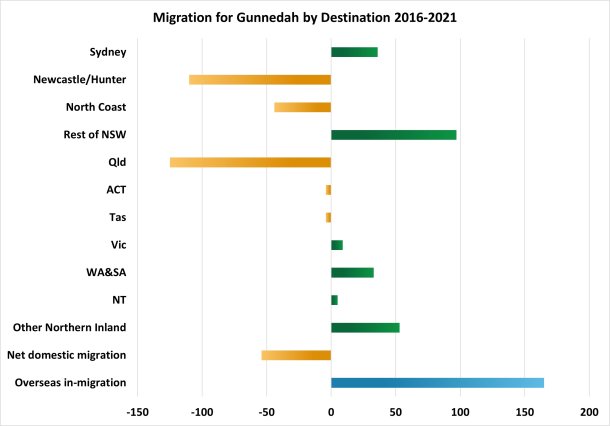
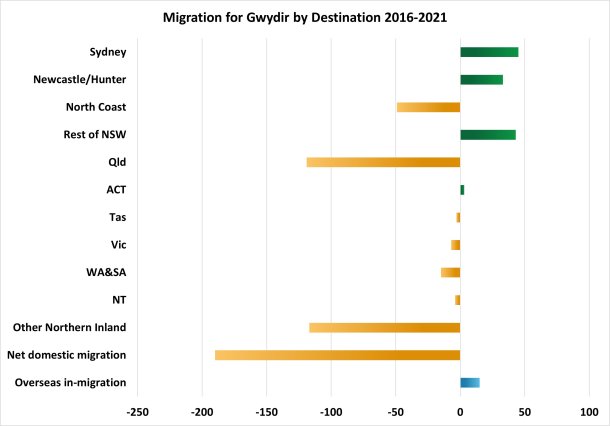

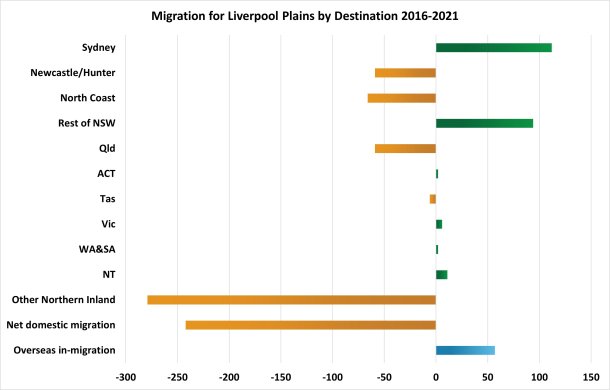

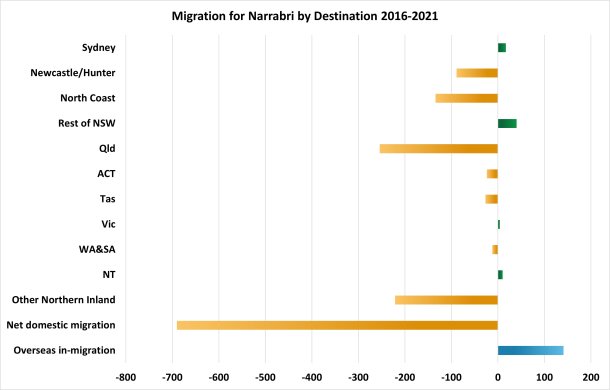
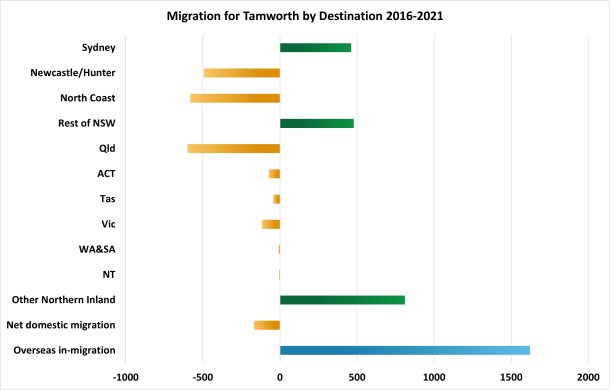



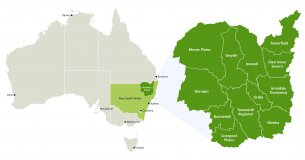 About Our Region
About Our Region
 Strategic Priorities
Strategic Priorities
